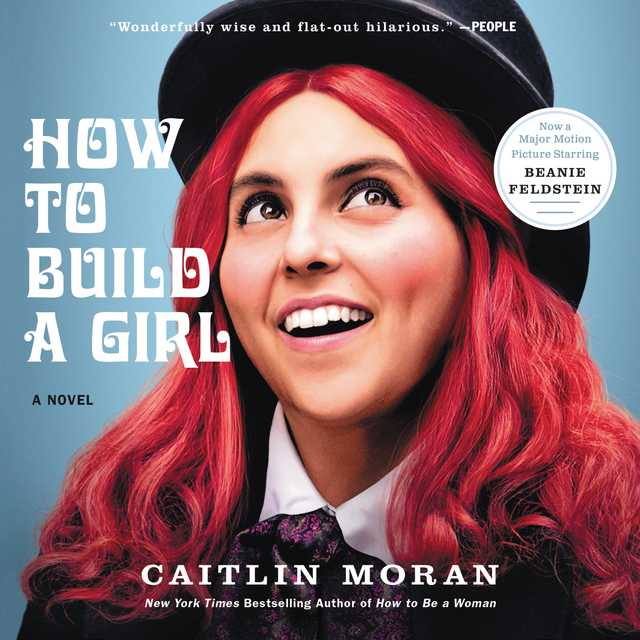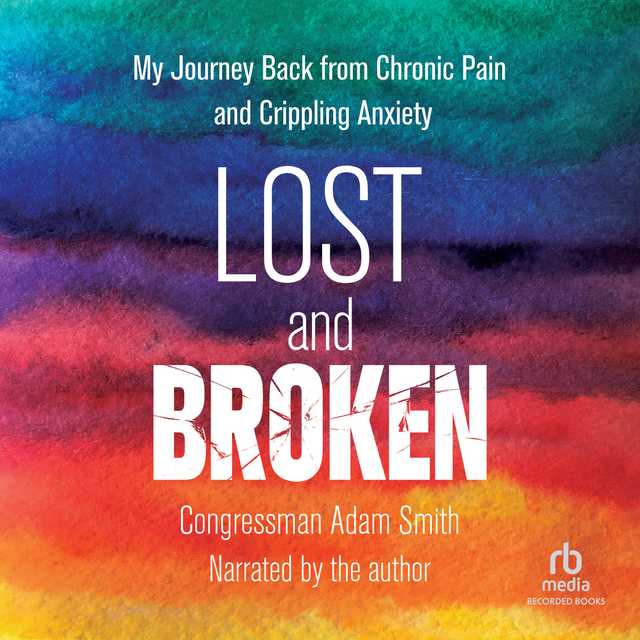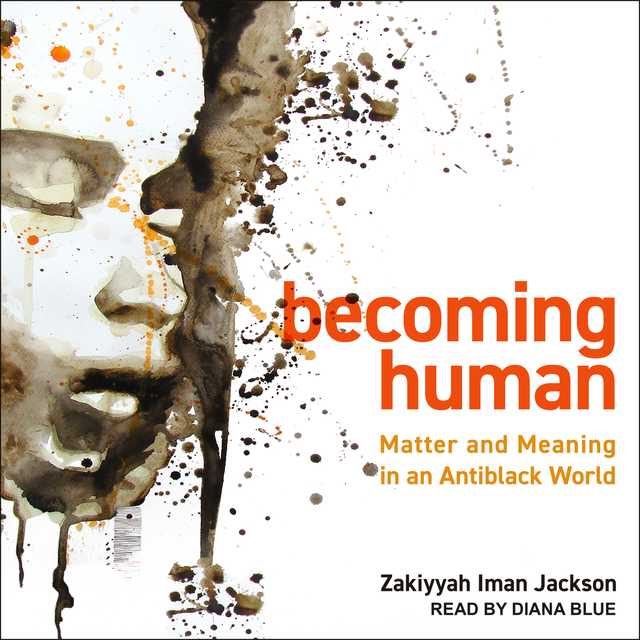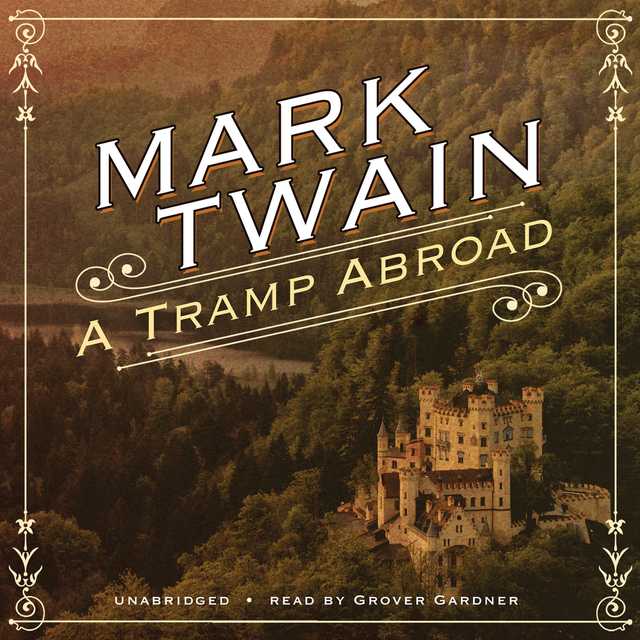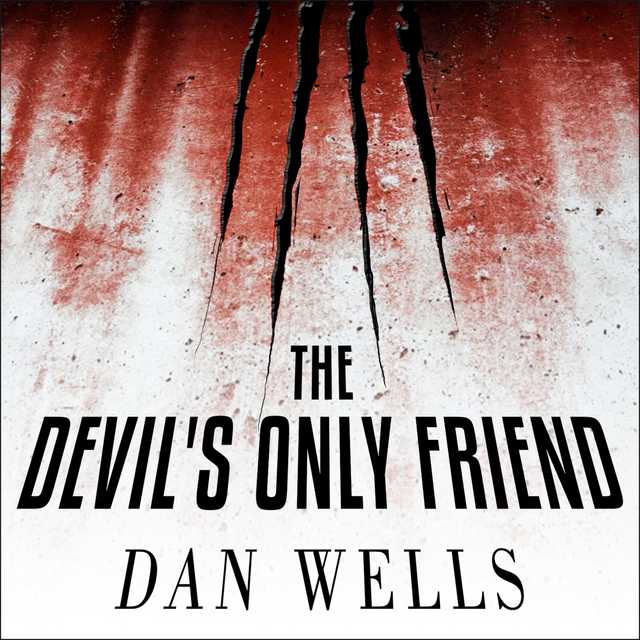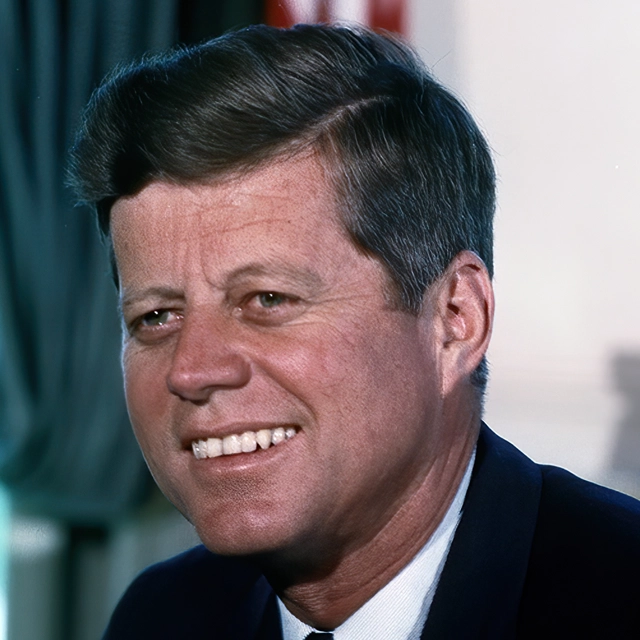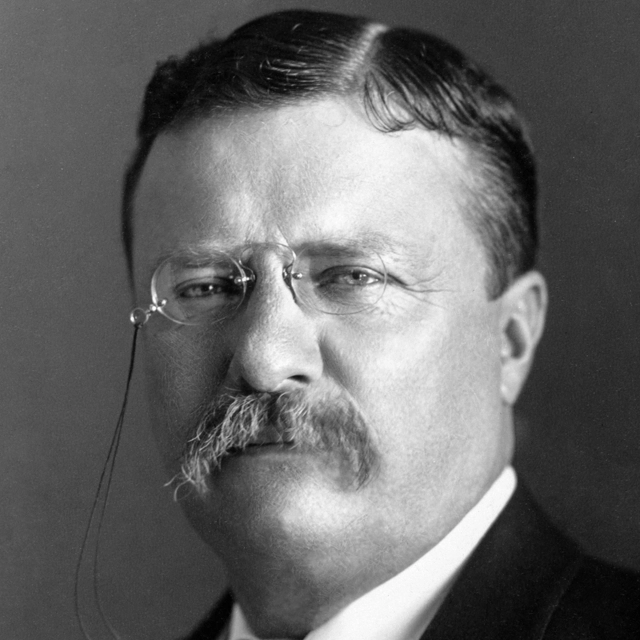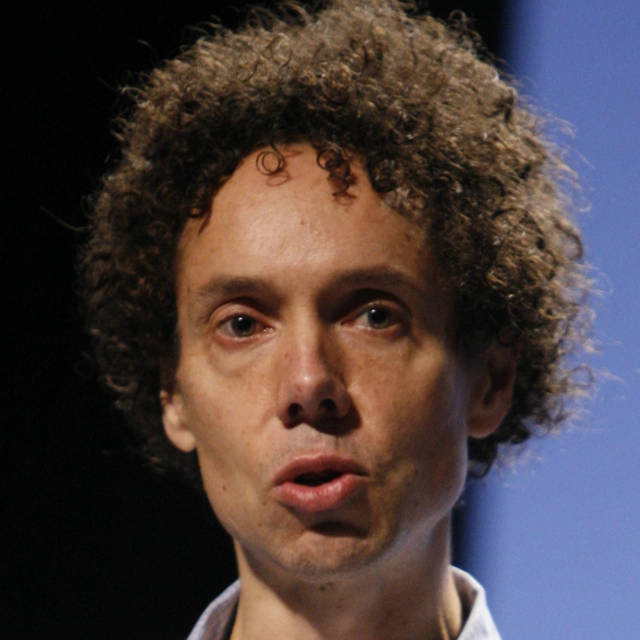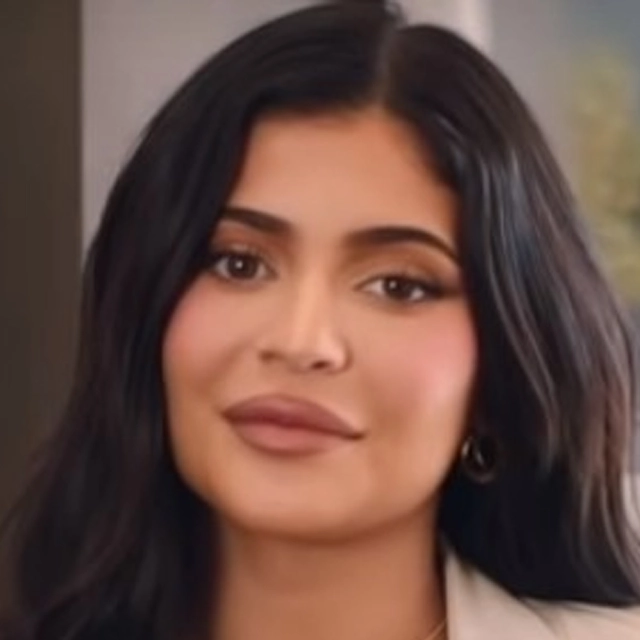How to Build a Girl Audiobook Summary
Now a major motion picture starring Beanie Feldstein!
The New York Times bestselling author hailed as “the UK’s answer to Tina Fey, Chelsea Handler, and Lena Dunham all rolled into one” (Marie Claire) makes her fiction debut with a hilarious yet deeply moving coming of age novel.
What do you do in your teenage years when you realize what your parents taught you wasn’t enough? You must go out and find books and poetry and pop songs and bad heroes–and build yourself.
It’s 1990. Johanna Morrigan, fourteen, has shamed herself so badly on local TV that she decides that there’s no point in being Johanna anymore and reinvents herself as Dolly Wilde–fast-talking, hard-drinking Gothic hero and full-time Lady Sex Adventurer. She will save her poverty-stricken Bohemian family by becoming a writer–like Jo in Little Women, or the Brontes–but without the dying young bit.
By sixteen, she’s smoking cigarettes, getting drunk and working for a music paper. She’s writing pornographic letters to rock-stars, having all the kinds of sex with all kinds of men, and eviscerating bands in reviews of 600 words or less.
But what happens when Johanna realizes she’s built Dolly with a fatal flaw? Is a box full of records, a wall full of posters, and a head full of paperbacks, enough to build a girl after all?
Imagine The Bell Jar written by Rizzo from Grease. How to Build a Girl is a funny, poignant, and heartbreakingly evocative story of self-discovery and invention, as only Caitlin Moran could tell it.
Other Top Audiobooks
How to Build a Girl Audiobook Narrator
Louise Brealey is the narrator of How to Build a Girl audiobook that was written by Caitlin Moran
About the Author(s) of How to Build a Girl
Caitlin Moran is the author of How to Build a Girl
More From the Same
- Author : Caitlin Moran
- Moranthology
- How to Be a Woman
- Moranifesto
- How to Be Famous
- More Than a Woman
- Publisher : HarperAudio
- Abraham
- American Gods [TV Tie-In]
- Dead Ringer
- House of Sand and Fog
- Prey
How to Build a Girl Full Details
| Narrator | Louise Brealey |
| Length | 9 hours 31 minutes |
| Author | Caitlin Moran |
| Category | |
| Publisher | HarperAudio |
| Release date | September 23, 2014 |
| ISBN | 9780062350817 |
Additional info
The publisher of the How to Build a Girl is HarperAudio. The imprint is HarperAudio. It is supplied by HarperAudio. The ISBN-13 is 9780062350817.
Global Availability
This book is only available in the United States.
Goodreads Reviews
Amy
July 08, 2014
I like to imagine, sometimes, that Caitlin Moran is my friend. We have such fun together in my head! You would love hanging with us. Shopping for orthopaedic boots, listening to shoegaze, and cackling like fishwives. We share stories about our fat, unpopular, wannabe-indie childhoods. We have loads to talk about. I love to hear her anecdotes! My friend Caitlin is proper funny. We talk a lot--Caitlin is a talker--and after a while I start to notice that I'm hearing a lot of her anecdotes more than once. Like, some of them I've heard literally thirty times, and each time the details are a little different and she thinks of different jokes to spice them up. I still laugh at the jokes. But I start to wonder if we can't talk about something else for a while. This is the thing about How To Build A Girl: it's a semi-autobiographical coming-of-age first novel. It's a novelist's rite-of-passage: something they need to get out of their system before they can start telling other people's stories. But if that novelist has already worked their own story into a £250k a year career at the Times, a bestselling non-fiction book AND a TV pilot, you can't help but question their versatility.In some ways it's unfair of me to criticise Moran, who I think is an absurdly talented writer, for repeating her themes when I've just finished an Alice Munro short story collection in which every character was a mid-century woman from suburban Vancouver in an unsatisfying marriage with a father that ran a mink farm. No-one questions Munro's versatility. She's just won a Nobel prize. Plus, I lapped this up in less than 24 hours so I cannot claim I'm bored of the formula. Still, I can't help but notice that when the novel covers territory unfamiliar to Moran the writing is much less convincing: Moran was home-schooled and Johanna's school experience is no more than an afterthought. It was a shame. I would read the HELL out of a high-school comedy written by Caitlin Moran. Maybe next time she'll be ready to bust out of her comfort zone and try one.
J.L.
February 17, 2022
“I am getting incredibly high on a single, astounding fact: that it’s always sunny above the clouds. Always. That every day on earth—every day I have ever had—was secretly sunny, after all.”In trying to figure out why Caitlin Moran's How to Build a Girl reminded me of The Bell Jar, for me it came down to how raw emotion as well as smart heroines set the tone on a collision course with a future they couldn't always control. In How to Build a Girl, Johanna self-consciously invents a new and crazy personality complete with a new name, Dolly Wilde. Dolly is a self-styled writer, Goth girl, partier and sex adventurer. This was a darkly funny and compelling story. Though it's also cringe worthy, my favorite moment has Johanna imitating Scooby Doo on a local radio program. That's light stuff compared to what comes later (sex, drugs, and self-harm). Somewhere in the last third of the book, I think the book lost some momentum. Still, I enjoyed How to Build a Girl.“I wish I was Bill Murray. I hope everything I’ve read about evolution is wrong, and I eventually evolve into him. It’s one of only three plans I have.” Love this quote!
Maxwell
January 07, 2017
In How to Build a Girl, Caitlin Moran has created one of the funniest, most genuine and vivid characters I've read in a long time. Johanna Morrigan is witty, insecure and delightfully crass. And her story—that of a day-dreaming young girl growing up poor in 1990's Wolverhamption (which I can only assume equates to the British suburbs) who aspires to music journalism fame by reinventing herself as 'Dolly Wilde' after a disaster on live TV—is charming and incredibly relatable. Johanna goes through the things nearly every young adult experiences: first loves, feeling left out, identity crises, and dreaming about adulthood. But her story is a lot more crude [I mean lots of sex, drugs and rock 'n' roll here] and a lot funnier than most. If only we could all look back on our teen years with this sense of humor.I do think that's one point Moran is trying to get at with this novel; that everything seems worse in the moment, and if/when you take a step back, especially once you're older & wiser, you'll be able to see things as they really were—a.k.a. not that bad. But the journey we go on in this story, at Johanna's expense, is riotously wacky and highly enjoyable. And I'm super thrilled this is just the first in a series! I'm wavering between 3.5 and 4 stars for this one, so I bumped it up to the latter because it's just so fun & easy to read.
Kara
April 08, 2017
Second reading: December 15 to 16, 2016This was the (viewer-selected!) December book for the Banging Book Club. I read this over two years ago (God, where does the time go?) but decided to re-read it. I do not regret this decision. It’s even better than I remember.I’m actually pretty happy with my review below, and it is long, so I won’t add much. But as much as this book is about sex (hence its pick for the club), it is also about growing up, about being poor, about being a woman, about finding one’s identity as a person. And it is about getting permission from oneself to make mistakes, to not be perfect, to accept that you will go through life rebuilding yourself time and again.How to Build a Girl is funny and compassionate and so smart and is exactly what we should look for in our YA, in our books in general. Read on to find out why.I still want to quote, like, the entirety of this book.First reading: August 3 to 7, 2014I’m not and never was an adolescent girl; I can’t understand what growing up as an adolescent girl must be like. But for a brief moment, thanks to Caitlin Moran’s writing, I felt like an adolescent girl. Beyond the humour and zaniness, it’s this raw empathy, such a powerful and important emotion, that made me enjoy How to Build a Girl.Because we could all do well to feel like an adolescent girl once in a while.We inhabit a society that is still largely built by and for middle-aged white men. It’s tough being an adolescent, tougher still being an adolescent girl. But for those of whose who didn’t grow up as one, it is very difficult to do more than acknowledge this (and some of us don’t even go that far). It’s one thing to say that impossible beauty standards in media damage teenage girls’ self-esteem and body image and another thing to understand what that actually means for how a girl thinks and feels and acts. There are plenty of books and other resources that help people recognize the former; here, Moran manages, at least sometimes, to communicate the latter.With regards to beauty, Moran has Johanna confess:… my biggest secret of all—the one I would rather die than tell, the one I wouldn’t even put in my diary—is that I really, truly, in my heart, want to be beautiful. I want to be beautiful so much—because it will keep me safe, and keep me lucky, and it’s too exhausting not to be.It’s important to note that, being a first person narrator, Johanna is necessarily unreliable—and there are times when her constant rephrasing and hedging indicates she isn’t so willing to be honest with herself. This isn’t one of those times, though. This is brutal honesty, the divulging of a deadly secret. Johanna has already had fourteen years on this Earth to internalize the stricture that her appearance is her primary concern. (Just think about how we are socialized to compliment young girls on their pretty dresses or their hair, to comment on their colour choices and aesthetic preferences; with boys, on the other hand, we commend them more on actions than fashions.) She has, alas, incontrovertibly become part of that beauty myth … but at the same time, there is nothing inherently wrong with wanting to be “beautiful” (whatever that means). It’s possible to be strong, independent, feminist and be beautiful. But there will always be people who will tell Johanna and other women that this is not the case, that these two things are mutually exclusive: you can be a feminist and ugly, or beautiful and a good girl, but you can’t be a beautiful feminist. They are lying, or sadly mistaken, but that makes their voices no softer or easier to ignore.Moran equips Johanna with an almost unbelievable talent for acting more grown up than she is. At fifteen she has bluffed her way into a job at the Disc & Music Echo. In the guise of her alter ego, Dolly Wilde, she becomes a carefree drinker, smoker, and Lady Sex Adventurer. At times, the story takes on an almost fairytale quality, because bad things happen, but they are always story-appropriate bad things. There are no massive heroin overdoses, arrests and nights spent in jail. In all her enthusiastic sexual experimentation, despite ending up alone in the flats of several (often drunk) men who could take advantage of her should she change her mind and withdraw her consent, Johanna never seems to have a very negative experience. When she does, as in the case of Al, Moran plays it for laughs. Sometimes How to Build a Girl feels like a sugarcoated story of adolescent rebellion.Moran partially redeems herself by occasionally reminding us that Johanna is, at her core, still a gawky adolescent. She makes numerous errors and slip-ups that remind us of her inexperience:And within twenty minutes—and then, for the next twenty years of my life—I knew a very important thing: that all I wanted to do was be near John Kite. That things would now divide, very simply, into two categories: things to do with John Kite, and things not to do with John Kite. And that I would abandon anything in the latter in a heartbeat if the chance of the former was on offer.Boom. Fallen hard. As Dolly, she quickly gains the respect of her fellow staff for her reviews. Then she meets John Kite, and her teenage girlhood reasserts itself in a big way in the form of a crush. She writes a fangirl review of Kite’s album, and that tanks her reputation for a while.It’s also hard for me to be critical when Moran describes so well the sensation of being poor. Again, I’ve been lucky enough to live above the poverty line my entire life. It’s useful for us to try to understand, then, that when one loses income—whether it’s a job or benefits—for some families the solution is not as simple as “cutting back.” Extreme poverty brings its own set of challenges, such as not being able to make healthy meals:It’s not just the television. Everything must be cut. There are no more boxes of fruit and vegetables from the wholesale market now. Dadda buys a 50kg sack of wholemeal flour, and at least one meal a day now consists of chapattis—flour, water and salt mixed into a dough, flattened into plate-sized rounds, by hand, girlled, and then covered in margarine.This is not good for you. This is not healthy. And since this is in England, the cost of healthcare is a burden to the taxpayers. In the United States, the cost of healthcare would drive the family further into debt, in a vicious cycle.Moran goes on to describe the sense of living hand-to-mouth:We become experts at finding sell-by-date bargains…. We live on ketchup and salad cream. Without them, there would truly be a riot. The sum contents of our morale comes in 1kg own-brand condiment bottles.A gas bill lands, then an electric bill. Mum arranges a second overdraft, to pay them: so now we’re going backwards, twice as fast.It’s heartwrenching, and it’s a potent challenge to people who succumb to the notion that the majority of those on welfare are somehow gaming the system and living luxuriously on the taxpayer’s dime.So it’s no wonder, given this situation, that Johanna chooses to handle it in the way she does. She creates an entire alternative life for herself. When she is being Dolly, Slayer of Musicians, Lady Sex Adventuress Extraordinaire, she does not have to face that gnawing fear that her family is going to lose the house—and that it’s her fault. Gradually Johanna gives herself over to this life, allows the character of Dolly to subsume her own. She constructs Dolly as a life preserver, building a girl (hence the title) who can be successful in the society that she perceives.How to Build a Girl also addresses the related problem, both in its very existence and explicitly in the plot, that there is a dearth of narratives built for girls. Even much of the popular YA fiction targeted at girls, by women authors, tends to reinforce or is co-opted by the patriarchical narratives of our day. In a passage where it feels like Moran is blatantly talking to the audience through Johanna:In later years, I find this is called ‘physical disconnect’, and is all part and parcel of women having their sexuality mediated through men’s gaze. There is very little female narrative of what it’s like to fuck, and be fucked. I will realise that, as a seventeen-year-old girl, I couldn’t really hear my own voice during this sex. I had no idea what my voice was at all.Yeah, the language is couched as coming from the narrator-Johanna’s older perspective, but it still feels out of place in the book. Nevertheless, it’s still true and so maddening. We’ve made great strides when it comes to acknowledging, embracing, and portraying sexuality in media … but it’s still complicated, this portrayal of women as sexual beings. It’s all wrapped up in thorny issues of autonomy and agency and voice. And Moran explores these from a teenager’s perspective. Dolly is quite sexually active, and she is eager to learn as much about sex as she possibly can:I feel, urgently, that I want to be knowledgeable about fucking. It’s an attribute I wish to have. I want to be respected and admired for what a legendary piece of ass I am … but the only way of doing that is by going out and having a lot of sex. And that has repercussions.For in a way that feels quite unfair, the only way I can gain any qualifications at this thing—sex—that is seen as so societally important and desirable, is by being a massive slag—which is not seen as societally important and desirable. This often makes me furious.I just love these two paragraphs. Moran so succinctly sums up one of the most harmful paradoxes about modern sex education and the way we police women’s sexuality. First, notice how she exclusively frames her sexual experience in terms of the male gaze: “a legendary piece of ass”. She doesn’t necessarily want to become more knowledgeable about sex for her own benefit but so that she can be better-regarded—straight women will want to be her, straight men will want to fuck her. Second, Johanna, through Dolly’s exploration, is quite sex-positive. But she has quickly stumbled onto the sexual double-standard: (1) straight men generally want women to sleep with them, and (2) it’s OK for a man to sleep with lots of women, but (3) if a woman sleeps with a lot of men, somehow that’s bad (even though, in her interactions with other men, there is always a latent expectation that if she is single she must also be sexually available, see (1)). I’m not a woman, and I find this all baffling and infuriating, so I can only imagine how the women who actually have to deal with this shit must feel.Some otherwise-civilized countries (*cough* America *cough*) are still debating about teaching contraception in sexual education classes. Countries like Canada and the UK have, for the most part, moved beyond this stumbling block, but our sex ed. curriculum is still woefully inadequate to the point of being laughable. Occasionally someone will propose, quietly and calmly, that we reform the curriculum so as to create a safe environment in which young people could, you know, ask questions about sex and get accurate, straightforward answers without a whole lot of moralizing or even intentionally inaccurate information. And then others flip out, because it’s unthinkable that young people could possibly be having sex, and we totally shouldn’t give them that kind of information, because we have to think of the children, don’t you know? (I assume they are referring to the children who are the result of unwanted teenage pregnancy because of improper contraception use?) Because, as a society, we have mistaken the fact that our attitudes towards sex are more permissive than Victorian times as evidence of our own maturity, when in fact when it comes to sex, we are still a bunch of squabbling infants. And so our sex ed. in schools remains a rubber-stamp of anatomical details forgotten the moment students leave the classroom, and teens learn what they need to know from the Internet and each other.But I digress. I digress because that’s the kind of book How to Build a Girl is: it makes you think about all these latent assumptions we have about our society. For me, a slightly-no-longer-young-adult man, it helps me better empathize with the challenges that women face as they navigate adolescence into adulthood. Moran does this with a kind of zany, occasionally insincere sort of whimsical glee that threatens to make you not want to take the book seriously. But I think this is because, ultimately, she wants the book to be a very positive and not all that harrowing story.This isn’t the story of Johanna Morrigan, who came from a council estate, fell in with hard people, did drugs and got drunk and had sex and got really fucked up. It’s the story of Johanna Morrigan, teenage girl, who came from a council estate, built herself into someone else, and realized along the way that she needed to start over—to keep some aspects of her new self, and jettison others. That is, essentially, the experience we all go through during adolescence, whether we are as aware of it as Johanna or not. Some of us, though, owing to our economic background, our race, our sexual and gender identities, have an easier time of it than others.And I’m really glad that Moran has tried to produce such a thoughtful and authentic narrative for girls. It’s not perfect. But it is a worthy attempt, and it is notable, and I hope we see more like it. Because I would really rather live in a society where our stories tell girls and women that they are awesome people, that they can grow up and continue to be awesome people. How cool a world would that be? Let’s make it happen.
Emily
July 03, 2014
I want to hug this book and carry it around with me forever like a security blanket.
Elyse
April 09, 2015
This novel started out as a 'sauna' read --(a side book). I got hooked -- "How To Build a Girl" became 'THE' book I was reading. After humiliating herself on local television, 14 year old Johanna transforms herself into Dolly Wilde,a cooler-than-cool music reviewer who's big into sex, drugs, and rock and roll. All is well until Johanna starts to loose herself in her alter ego, at which point she questions where she ends and Dolly begins.This is a laugh outloud roller coaster ride through the best and worst parts about being completely embarrassed of your teenage self.Note: I liked this book...yet I would not have liked my 14 year old daughter to read it. My own '14' year old life was nothing like this girls --I was a little square!
María Ángeles
October 13, 2016
Sin lugar a dudas, es un libro muy transgresor. Johana es una adolescente de 14 años que empieza a contarnos su mundo. No tiene pelos en la lengua, y lo cuenta absolutamente todo. Desde las borracheras de su padre, sus problemas existenciales, o cómo se entretiene cada noche con su desodorante.Hay momentos totalmente magníficos, de arrancarte una carcajada y no parar de reír. De volver a pensarlo y volver a reír... Simplemente, geniales. Hay otra cosa que me ha encantado, y es cómo Johana cree que ha cometido un error y entonces piensa que el mundo se va a acabar, que su familia se va a desintegrar y que ella tiene la culpa de todo. ¿No tuvisteis alguna sensación similar en vuestra adolescencia? Yo sí, y me ha encantado leerlo y saber que no he sido la única.Me encanta el amor que tiene por todos los de su familia, a pesar de sus numerosos defectos. Me encanta su relación con Lupin y con Krissi. Preciosa. Y a pesar de no tener una familia perfecta, adoro como todos cuidan de ella. Un fallo: las numerosas referencias musicales, de cine, de libros, de series. Está claro que deben existir, pero son tantísimas que necesitaría una "tesis" para conocerlas todas.Aunque Johana nos cuenta su vida a través de sucesos, anécdotas (muchas de ellas sexuales) y fracasos, Johana realmente nos está hablando de cómo aprendió, con ensayo-error, a ser una mejor persona.Reseña en BLOG: http://unablogueraeventual.com/como-s...
Sarah
November 08, 2014
Absolutely adored it. Hilarious and dark, 'shocking' and honest. Lots of sexual content, strong language and a scene with self harm. So, you know, you've been warned.
Lynx
November 10, 2016
I LOVED this book. It was as if Caitlin Moran had read my teenage diary and wrote it all out for me. Her writing perfectly captured that of a teen and managed to transport me back into my 14 year old self, insecure but eager to tackle the world, believing I knew it all when I really knew nothing and reminding me of all the mistakes I made along the road to discovering myself. Reading this was like therapy, realizing all those mistakes in life weren't made for nothing but were essential in me "building" the woman I've become today. Moran manages to cover many issues (growing up in poverty, body/self esteem issues, addiction, depression..) without the novel ever feeling heavy and her sharp wit keeps you smiling, or flat out laughing through situations that could by any other pen read as heartbreaking making, for me, this "therapy" thoroughly enjoyable.It's an amazing experience to connect heart and soul with a piece of literature. I only wish I could have read it a decade earlier!
Dor
July 02, 2014
[My copy of this book was an uncorrected proof, provided to me gratis by the publisher, HarperColins, facilitated in this act of goodness by Edelweiss. I think this makes me a pawn of Murdoch now.] From the outside, Caitlin Moran can look a bit like a one-trick pony. Although she's been a journalist and Times columnist for many years, she had massive success a couple of years ago with her memoir/feminist treatise How To Be A Woman which contained many amusing tales about her poor Wolverhampton childhood. She, with her sister, has written a sitcom, Raised By Wolves, about a teenager growing up in poor Wolverhampton. Now there's this. Despite the authorial introduction in which we are assured How To Build A Girl is not based on truth, one could be forgiven for fearing, as I did, a thinly fictionalised re-tread of the stuff which made Moran a household name. It isn't. Far from it. Although there are clear parallels - and some commercially cynical titling and structure going on - it all read new to me. Opening in 1990, 14-year-old Johanna Morrigan lives in Wolverhampton. She wonders when she's going to get to finally have sex. She spends much time wanking. The book is hilariously instructional on this point if initially a little ... uncomfortable. The opening scene is of Johanna doing what she enjoys while her 6-year-old brother is asleep next to her. That it manages to get away with this is entirely due to Moran's cheerfully honest narrator, and later, to the other characters. The book follows Johanna from awkward 14-year-old to 16-year-old music reviewer "Dolly Wilde" to vaguely "built" girl of 18. It is that rare thing, a female narrative untempered by usual sub-plots which so often tacitly reinforce the idea that to be female is not enough on its own. The prose even points it out: there is very little female narrative of what it's like to fuck and be fucked. This is a coming-of-age story. It is about Johanna figuring out who she is. It's not about the mistakes she makes while she does it, and it's not about them *being* mistakes, and it doesn't shame her for anything she does. It just ... is. Johanna is going to make or break this novel for the reader: she's frank and honest, she doesn't know what she's doing and she's not what she wants to be but she's going to try. She is all feigned confidence and internal doubt, but ultimately just a person who is doing what people do, in a top hat. I loved her utterly and not just for the word "swashfuckler". There is a section near the end about cynicism, about what it does, and it brought me to tears (and I am not generally a weeper) because it's so utterly true and it made me swear to be a better person for the rest of my days. In an earlier draft of this review, I went on to say the feeling wore off after an hour or two, thank god, but I've read the bit I'm talking about several times and it made me weep again. I'm weeping now. I went away, ate muesli, came back and started up again within seconds. [...] it is a million times easier to be cynical and wield a sword, than it is to be open-hearted and stand there, holding a balloon and a birthday cake, with the infinite potential to look foolish. I don't have it in me to stand with balloons. Sometimes I try; invariably nothing happens but it's that nothing which destroys me. I once killed every conversation on a table of 12 people by being enthusiastic about Marina Lewycka's A Short History Of Tractors In The Ukraine, so I went back to what I learned to do at school: not show enthusiasm about things. I play down my love of everything, or I turn it into joke: the crazy cat lady, the foreigner, the girl who waits for somebody else to do maths. I play down the things I am good at because being it's easy to deal with that nothing if nothing is what I've given. But I want balloons. I want to have balloons and be proud of them and when that nothing happens, I want it to not matter because balloons. And this is why I love this book and why you need to read it. Moran's finger is so on the money in so many respects. I don't think there's a person alive who doesn't feel like a fraud at some point, and How To Build A Girl is about a character who is pushing against that as she tries to ... build who she is. Good books are about tension and this one considers the place where enthusiasm and ego meet. It is brilliant, and hilarious, and at times like reading something you knew but have forgotten; we've all been there. It misses out on 5 stars very narrowly - it lacks an overall cohesion. With something like Catcher In The Rye, there is a reason for the particular section of story we are told - HTBAG, while thoroughly entertaining lacks that and, as a consequence, sputters to an ending rather than giving that satisfying over-ness. There are some other minor nitpicks, a couple of things which - again - lack that wholeness and which dangle annoyingly. My uncorrected proof had some modern slang terms in it which I hope were removed. It's also worth briefly touching upon the Twitterstorm of #CaitlinMoranShouldRead. That was a nonsense; this is not YA. This is coming-of-age. It's looking back from the vantage point of adulthood. It has far more in common with Moran's invoked Jilly Cooper than any YA I've ever read (but I'm not a big YA reader). By all means give it to your 14-year-old, but the prime audience are more likely to be me: 30-somethings who know who The Smashing Pumpkins are. How To Build a Girl is a first-rate read which I thoroughly recommend - it's sweary and graphic and surprisingly educational. Even before the bits which had me weeping over my Kindle it was pretty fabulous, and those bits by no means made the book for me. If we're going to complain about Moran's equine fidelity, we can make sure to note she perfecting it with every offering: 4.5 stars.
Juan
March 10, 2020
Tenía miedo de que al volver a leer esta novela ya no me pareciera tan inteligente, tan divertida, tan atrevida y tan dinámica como me pareció en su momento... pero me ha vuelto a sorprender y a encandilar.Este libro cuenta la historia de una adolescente gorda de clase obrera en la Inglaterra de principios de los 90 que decide que su forma de ascender socialmente y tener una vida mejor que la de sus padres será convertirse en crítica musical. Johanna está siempre entre dos mundos (entre su pueblo y Londres; entre la adolescencia y la vida adulta; entre el éxito y el fracaso; entre ser una adolescente acomplejada y una joven sexualmente voraz; entre buscando el amor de su vida y disfrutando de la noche londinense) y es esa dicotomía lo que hace del libro un manifiesto por las contradicciones, por los riesgos vitales y por los estrepitosos fracasos de los que nace la gloria.La autora es una persona mordaz, chispeante y deslumbrantemente inteligente, y con Dolly Wilde ha conseguido crear un personaje icónico que nos encarna a todos los que una vez fuimos unos fracasados. Acaba de ser publicado en España la segunda parte de este libro (‘Cómo ser famosa’) y quise refrescar la memoria echando un vistazo al primero: no esperaba volver a leerlo palabra por palabra (algunas escenas míticas, varias veces) ni disfrutarlo tanto como la primera vez. Ojalá el nuevo esté a la altura.
Lotte
July 05, 2016
This was such a funny and gritty coming-of-age story about a girl who decides to reinvent herself, takes on another persona and starts working at a music magazine when she's just fifteen. I didn't get half of the references to the music scene of 1990s England, but that didn't really bother me and overall I really enjoyed the process of reading this. (Beware though, there's lots and lots of sexual content in this book, so maybe don't pick it up if you're very young or just don't like reading about stuff like that.)
Judy
September 10, 2022
I've had this book on my shelves for a long time. I picked it up on a whim one summer day and finished it less than 24 hours later. Caitlin Moran is my kind of feminist and came to her feminism much in the same way I did, by being wild and crazy and sexually over-active.Her heroine her, Johanna Morrigan, is a generation beyond mine but she also learned about life through books and then through men. At 14, she reinvents herself as Dolly Wilde and sets out to conquer the world. Her heart is in the right place. She wants to lift her bohemian family out of poverty.Her adventures are risky and sexy and then she has to re-evaluate her methods. Meanwhile, as a music journalist, she makes a name, she makes enemies, then figures it out. More fuel for my own writing. More encouragement to forgive myself and embrace the life I've led so far.
Jonathan
December 30, 2015
During the first 50 pages or so, I developed buyer's remorse. Not a painful, howl at the moon remorse, but a vibe. The story had its moments, including some excellent observations, an often interesting, amusing, vulnerable fourteen year old narrator who was growing on me, but some of the events, the way it rolled out, had bursts of tedium and I suspected they might grow and get worse. They did, in a way, near the very end, but for me, maybe because I've never read anything else by Caitlin Moran and I am a guy, this novel was mainly successful, mostly enjoyable, and somewhat fascinating as a case study of mixed-up, teenage girls transitioning to our mixed-up adult world.The narrator, Johanna Morrigan, is a cheerful, fat girl without friends. It is around 1990. I loved her cheerfulness. And her persistence. After hitting rock bottom, she decides quite consciously to remake herself, and luckily that does not mean dieting, which is never considered - this story is just not about that, not explicitly. There are very many hilarious scenes, observations, situations. When she is rejected by the local goths - one of whom is her cousin - she walks across the street to a record store to bone up on the current music scene. Before long, she's writing for a national music magazine. That's believably portrayed because it is apparently a detail pulled from the author's life story, except she accomplished it even younger.I think the author did some things amazingly well. Johanna's background is working class, which makes things more difficult, like buying the music she reads about in music magazines at the library- she has to borrow records from the library, order and wait weeks for them. We see her firmly entrenched in the world of her family while she simultaneously pulls herself out and away, by making herself anew, so consciously she breaks it down for you. Some reviewers faulted the voice for shifting haphazardly between Johanna at the time of the story and a Johanna looking back, but I disagree with the disappointment. When I sensed a Johanna looking back, it was a Johanna who reframed from judging herself too harshly, especially during the last third when Johanna, or Dolly as she'd renamed herself, was making mistakes that made me cringe (and laugh and worry...). There is a lot of sex and rough patches, though Johanna remains cheerful and witty, most of the time. In fact, even the first paragraphs are uncomfortably blunt. Despite that, I can't imagine disliking Johanna/Dolly. Her determination and her ultimate conclusion or realization about what is important to her is, I think, what makes this a great feminist novel.Would I recommend this to teenage girls? Maybe not if I was in some official capacity, such as a librarian, it is so foul at times - I am sure some people would object that any good could come from reading it. Would I recommend it to my daughter when she is a teenager? Probably, (if she asks about it?) but I hope she would already have enough sense/knowledge/wisdom not to emulate Johanna's path in its particulars. Many, many women, I presume, do not entirely empathize with Johanna and her creator at all, isn't that right guys?
Melissa
August 30, 2014
Brilliant, filthy, effing HILARIOUS, and required reading for aaaaall the ladies, and all the men I'd want to hang out with. (I made my boyfriend read it as soon as I was done, because I'd already read half the thing out loud to him in between uncontrollable bouts of LOL'ing.)I love Dolly Wilde. I love Caitlin Moran. Read this book if you like laughing, or coming of age stories, or girls, or boys, or sex, or music, or...what else is there? Ice-cream sundaes. Read it.And try to set aside those idiotic comments she made about YA books. For one, this book is too wonderful to hold a grudge, and for two, throughout it she keeps talking about "in later years," and "I would later look back on this," and blah blah blah, in such an adult, retrospective way that it definitely felt less like a YA than an adult book with a teen narrator. (Teens should still read it, though.)
Frequently asked questions
Listening to audiobooks not only easy, it is also very convenient. You can listen to audiobooks on almost every device. From your laptop to your smart phone or even a smart speaker like Apple HomePod or even Alexa. Here’s how you can get started listening to audiobooks.
- 1. Download your favorite audiobook app such as Speechify.
- 2. Sign up for an account.
- 3. Browse the library for the best audiobooks and select the first one for free
- 4. Download the audiobook file to your device
- 5. Open the Speechify audiobook app and select the audiobook you want to listen to.
- 6. Adjust the playback speed and other settings to your preference.
- 7. Press play and enjoy!
While you can listen to the bestsellers on almost any device, and preferences may vary, generally smart phones are offer the most convenience factor. You could be working out, grocery shopping, or even watching your dog in the dog park on a Saturday morning.
However, most audiobook apps work across multiple devices so you can pick up that riveting new Stephen King book you started at the dog park, back on your laptop when you get back home.
Speechify is one of the best apps for audiobooks. The pricing structure is the most competitive in the market and the app is easy to use. It features the best sellers and award winning authors. Listen to your favorite books or discover new ones and listen to real voice actors read to you. Getting started is easy, the first book is free.
Research showcasing the brain health benefits of reading on a regular basis is wide-ranging and undeniable. However, research comparing the benefits of reading vs listening is much more sparse. According to professor of psychology and author Dr. Kristen Willeumier, though, there is good reason to believe that the reading experience provided by audiobooks offers many of the same brain benefits as reading a physical book.
Audiobooks are recordings of books that are read aloud by a professional voice actor. The recordings are typically available for purchase and download in digital formats such as MP3, WMA, or AAC. They can also be streamed from online services like Speechify, Audible, AppleBooks, or Spotify.
You simply download the app onto your smart phone, create your account, and in Speechify, you can choose your first book, from our vast library of best-sellers and classics, to read for free.
Audiobooks, like real books can add up over time. Here’s where you can listen to audiobooks for free. Speechify let’s you read your first best seller for free. Apart from that, we have a vast selection of free audiobooks that you can enjoy. Get the same rich experience no matter if the book was free or not.
It depends. Yes, there are free audiobooks and paid audiobooks. Speechify offers a blend of both!
It varies. The easiest way depends on a few things. The app and service you use, which device, and platform. Speechify is the easiest way to listen to audiobooks. Downloading the app is quick. It is not a large app and does not eat up space on your iPhone or Android device.
Listening to audiobooks on your smart phone, with Speechify, is the easiest way to listen to audiobooks.

